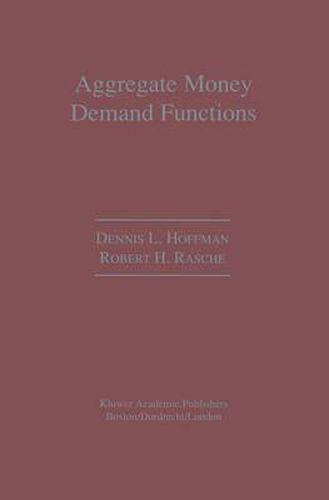Readings Newsletter
Become a Readings Member to make your shopping experience even easier.
Sign in or sign up for free!
You’re not far away from qualifying for FREE standard shipping within Australia
You’ve qualified for FREE standard shipping within Australia
The cart is loading…






This title is printed to order. This book may have been self-published. If so, we cannot guarantee the quality of the content. In the main most books will have gone through the editing process however some may not. We therefore suggest that you be aware of this before ordering this book. If in doubt check either the author or publisher’s details as we are unable to accept any returns unless they are faulty. Please contact us if you have any questions.
The econometric consequences of nonstationary data have wide-ranging implications for empirical research in economics. Specifically, these issues have implications for the study of empirical relations such as a money demand function that links macroeconomic aggregates: real money balances, real income and a nominal interest rate. Traditional monetary theory predicts that these nonstationary series form a co-integrating relation and, accordingly, that the dynamics of a vector process comprising these variables generates distinct patterns. Recent econometric developments designed to cope with nonstationarities have changed the course of empirical research in the area, but many fundamental challenges, for example the issue of identification, remain. This book is an effort to determine the consequences that nonstationarity has for the study of aggregate money demand relations. The object of this study is to utilize the tools of modern time series analysis to determine the role of an aggregate demand for real balances in the generation of macroeconomic time series. A significant characteristic of this research is the identification and estimation of this demand function in a multivariate framework, in contrast to most existing studies that concentrate on a single equation framework.
$9.00 standard shipping within Australia
FREE standard shipping within Australia for orders over $100.00
Express & International shipping calculated at checkout
Stock availability can be subject to change without notice. We recommend calling the shop or contacting our online team to check availability of low stock items. Please see our Shopping Online page for more details.
This title is printed to order. This book may have been self-published. If so, we cannot guarantee the quality of the content. In the main most books will have gone through the editing process however some may not. We therefore suggest that you be aware of this before ordering this book. If in doubt check either the author or publisher’s details as we are unable to accept any returns unless they are faulty. Please contact us if you have any questions.
The econometric consequences of nonstationary data have wide-ranging implications for empirical research in economics. Specifically, these issues have implications for the study of empirical relations such as a money demand function that links macroeconomic aggregates: real money balances, real income and a nominal interest rate. Traditional monetary theory predicts that these nonstationary series form a co-integrating relation and, accordingly, that the dynamics of a vector process comprising these variables generates distinct patterns. Recent econometric developments designed to cope with nonstationarities have changed the course of empirical research in the area, but many fundamental challenges, for example the issue of identification, remain. This book is an effort to determine the consequences that nonstationarity has for the study of aggregate money demand relations. The object of this study is to utilize the tools of modern time series analysis to determine the role of an aggregate demand for real balances in the generation of macroeconomic time series. A significant characteristic of this research is the identification and estimation of this demand function in a multivariate framework, in contrast to most existing studies that concentrate on a single equation framework.